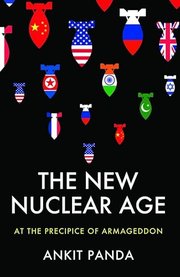This timely book delves into a host of issues connected to nuclear weapons, with conclusions that are, to say the least, disturbing. Panda, who has extensive experience as a writer and government adviser specializing in military geopolitics, brings a great deal of research material to the task, combining historical information with novel insights. He notes that strategic deterrence kept the peace during the Cold War between the U.S. and the Soviet Union, backed up with an underpinning structure of treaties and agreements. Most of these have become redundant, while China has vastly increased its nuclear arsenal. Panda believes that this could push the U.S. into upgrading its own stockpile, sparking a three-cornered arms race. He also devotes important attention to the potential for conflict between India and Pakistan, which is often overlooked in the West. Then there are wild cards, notably Iran and North Korea. They show scant regard for international nonproliferation rules and are pouring resources into nukes and missiles to carry them. Along the way, Panda examines new delivery systems such as hypersonic glide vehicles and long-range cruise missiles, which add another layer of volatility. Several countries have lower-yield nuclear weapons for battlefield operations, but their use could easily escalate into strategic strikes. Panda is concerned that deterrence might be no longer sufficient to ensure peace, although he does not see any real alternatives. He suggests that the big powers could establish avenues to defuse incidents that might spin out of control, but these would need to be overseen outside the public spotlight. Most of all, some fresh thinking and awareness among policymakers are required. Panda’s book is a good place to start.
Categories
THE NEW NUCLEAR AGE
